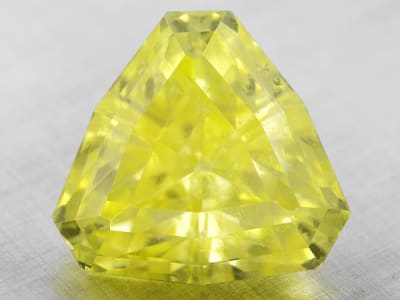Anglesite gets its name from a deposit locality: Anglesey, an island in Wales. Anglesite forms several types of crystal habits: tabular, prismatic, pseudorhombohedral, or pyramidal. They resemble those of barite and celestite. Prized by collectors for its strong dispersion, anglesite is often colorless to white, grayish, yellow, green or blue.
General Information
Common Name
Anglesite
Species
Anglesite
Transparency
Transparent - Translucent
Dispersion
Strength: Moderate Fire Value: 0.044
Refractive Index
Over The Limit 1.878-1.895
Birefringence
0.017
Optic Character
Biaxial
Optic Sign
Positive
Polariscope Reaction
Doubly Refractive (DR)
Fluorescence
SWUV: Inert to weak yellow
LWUV: Inert
LWUV: Inert
Pleochroism
None
Hardness
2.5-3
Streak
White
Specific Gravity
6.300-6.390
Toughness
Poor
Luster
Adamantine, Resinous
Fracture
Conchoidal
Cleavage
Good, in two directions, poor, in one direction
Chemical Name
lead sulfate
Chemical Formula
PbSO4
Crystal System
Orthorhombic
Chemistry Classification
Sulfate
Anglesite Colors
-
 Blue
Blue -
 Colorless
Colorless -
 Gray
Gray -
 Green
Green -
 Orange
Orange -
 White
White -
 Yellow
Yellow -
 Yellow
Yellow
Countries of Origin
Morocco; Unknown

